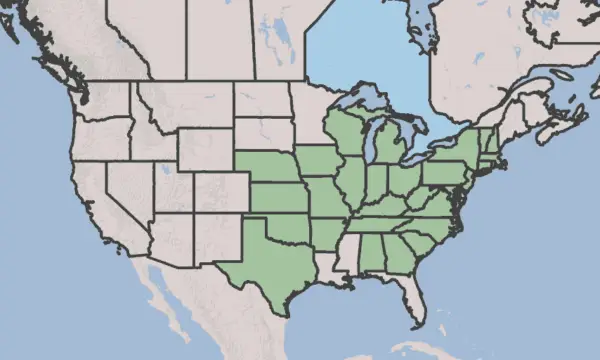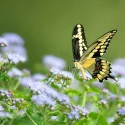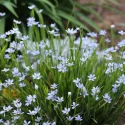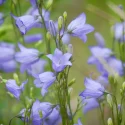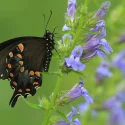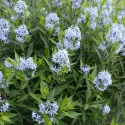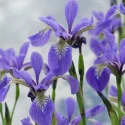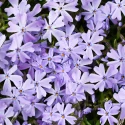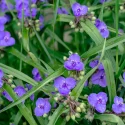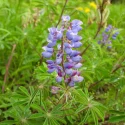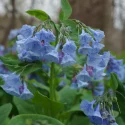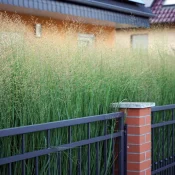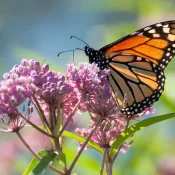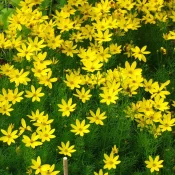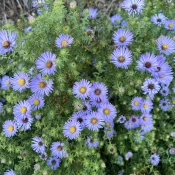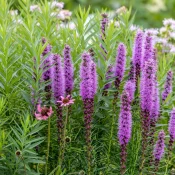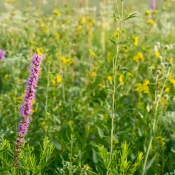False Blue Indigo
False Blue Indigo sends up tall stalks of blue flowers every May and June. They are great in bouquets and equally great in sunny gardens. They also offer an added benefit by fixing nitrogen in the soil, which then fertilizes the plants around them. They are very drought-tolerant, gorgeous additions to any yard. Scroll on for planting tips.
- Full Sun, Part Sun
- Tall (5'+)
- Spring flowers
- Pollinator lifeline
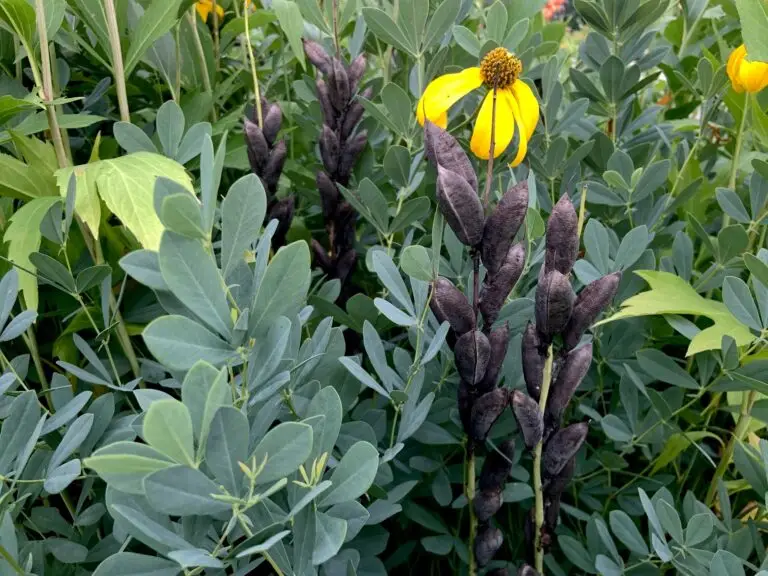
False Blue Indigo is a gorgeous native flower that returns decades of beauty after it is planted once. Because it’s a native plant, it easily thrives with minimal care in most Eastern American gardens (especially compared to lawns). In this article, we will discuss how to plant False Blue Indigo and what it looks like throughout the seasons. We will also share some excellent native flowers to pair with it. Let’s dig in, shall we?
Why is it called False Blue Indigo?
You probably already guessed it, but False Blue Indigo looks very close to the actual plant used for dying cloth blue—which goes by the common name True Indigo (Indigofera tinctoria).
False and True Indigos are part of the pea family and have similar-looking flowers and leaves, but only True Indigo can be made into bright blue dye. (False Blue Indigo makes a dye that’s a muted grayish-blue.)
While False Blue Indigo isn’t great for dying clothes, it is perfect for landscaping.
What are the benefits of planting False Blue Indigo?
False Blue Indigo (Baptisia australis) offers many benefits, making it a great addition to any garden. Some notable benefits of False Blue Indigo include:
Beauty for minimal gardening attention
The USDA sums up False Blue Indigo’s benefits nicely, “It has become popular because it grows well in many areas outside its native range when planted, does well without watering, requires no fertilizer or pesticide treatments and needs no pruning. The pods have been used in dried flower arrangements.”
Beauty with minimal work? We’ll take it! (Think of the time you’ll save, especially compared to lawncare or planting non-native.) False Blue Indigo’s flowers attract pollinators like butterflies and bees and can be cut for bouquets.
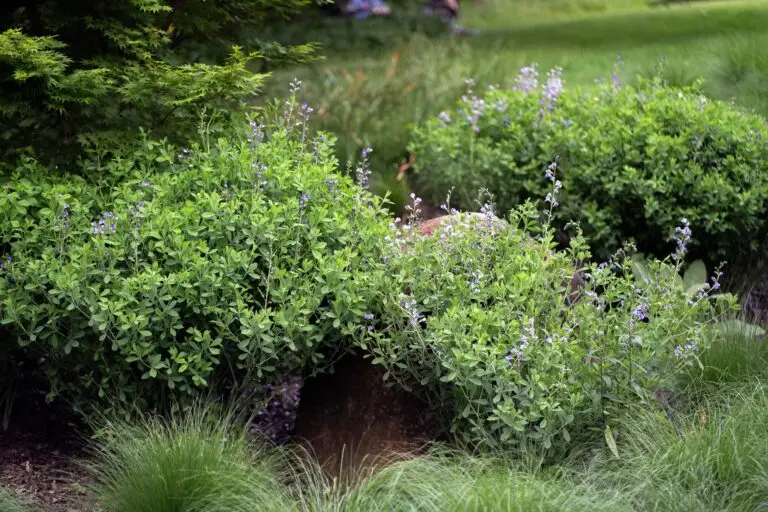
False Blue Indigo helps the other plants around it
False Blue Indigo is a hardy plant that requires minimal maintenance once established. Its deep taproot allows it to withstand drought conditions, making it ideal for water-wise gardens. Additionally, it’s a nitrogen-fixing plant, meaning it improves soil fertility by converting nitrogen from the air into a usable form, benefitting neighboring plants.
How False Blue Indigo changes seasonally
False Blue Indigo offers visual interest throughout the seasons.
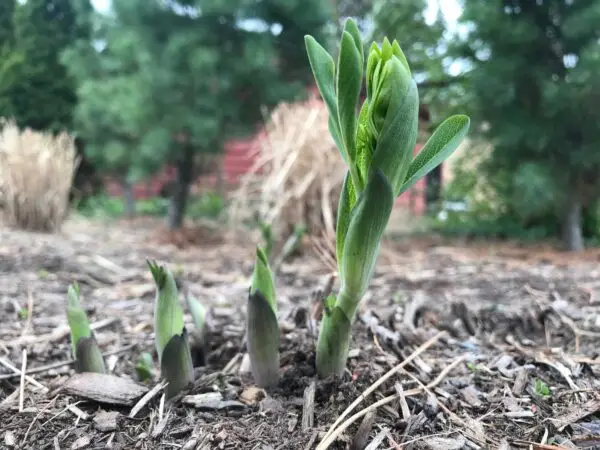
Spring
False Blue Indigo sends up blue-green shoots in the spring. They grow extremely fast—sometimes multiple inches in a single day.
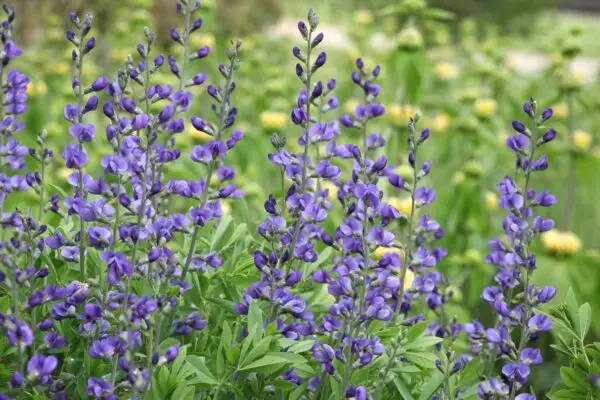
Late-Spring/Early Summer
In the late spring and early summer, False Blue Indigo covers its tall stems in rows of flowers. They are excellent cut flowers; they will last a week in a vase.
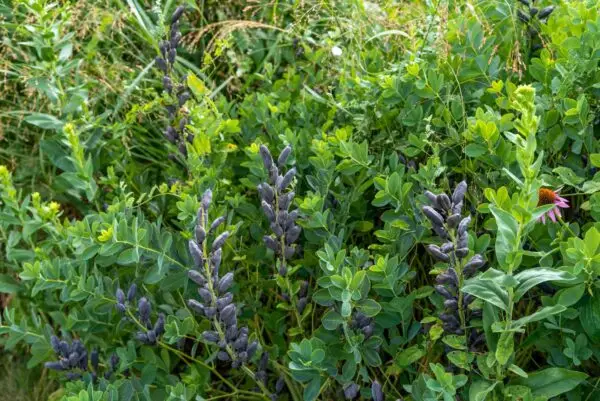
Late Summer/Fall
The flowers turn into stately seed pods—a favorite of black-capped chickadees. The leaves stay green and lush and provide food for caterpillars.
Where is False Blue Indigo native?
False Blue Indigo is native to half of the United States and is also now found in Eastern Canadian provinces. Anyone from Texas to New Hampshire can happily add this to their landscape.
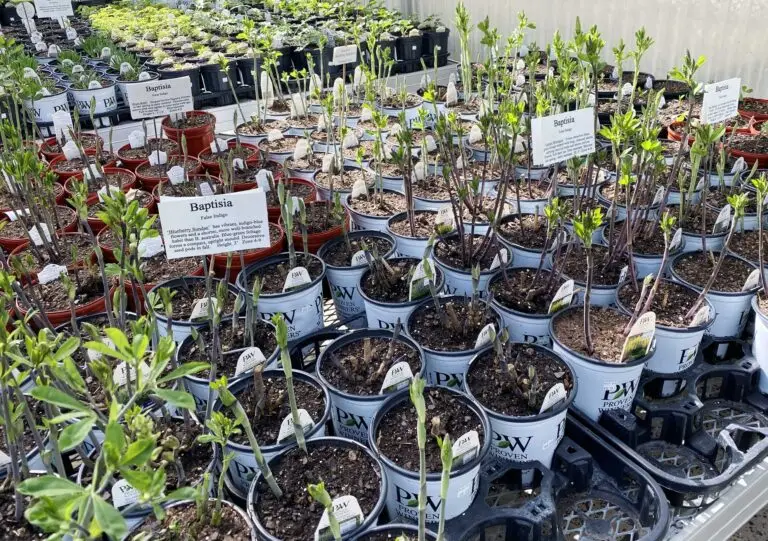
Tips for planting False Blue Indigo
While False Blue Indigo offers many advantages, there are a few challenges you may encounter when planting and caring for this perennial:
It can require patience
False Blue Indigo can take a few years after planting to reach maximum flowering. The first year you plant it, it spends most of its energy growing its long taproot, like a carrot. This taproot helps False Blue Indigo store water, which is why it’s so drought-resistant. When you plant these flowers—especially by seed—patience is key. It needs to spend the first year or so making its roots.
If you’d like flowers the first year, get medium-sized plants from a reputable native nursery or a Master Gardener plant sale.
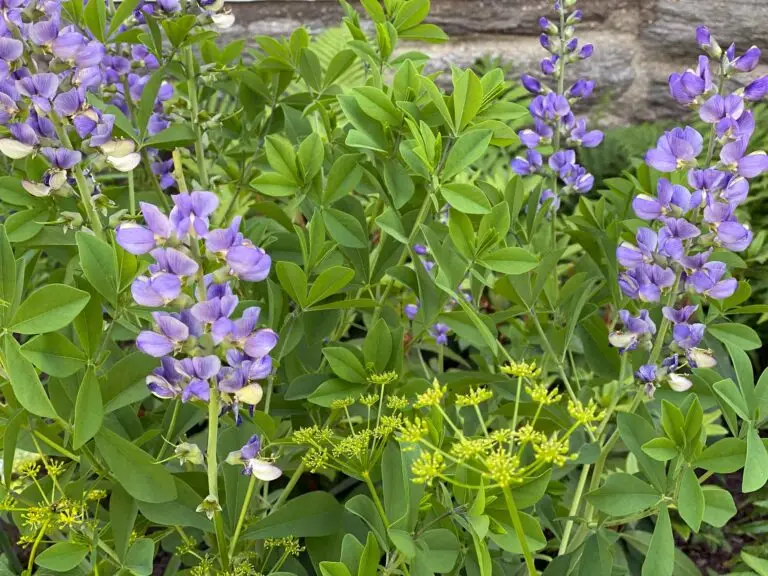
Plant False Blue Indigo in groups for maximum effect
False Blue Indigo is so stunning—especially while in bloom. The visual impact becomes more pronounced when you plant these native plants together.
Because False Blue Indigo looks so good planted in a group, we’ve included it in our round-up of Single-Plant Gardens, which are landscaping ideas driven by a single plant (aka one-stop landscaping.) Sometimes, all you need is multiples of one plant and your landscaping will look incredible.
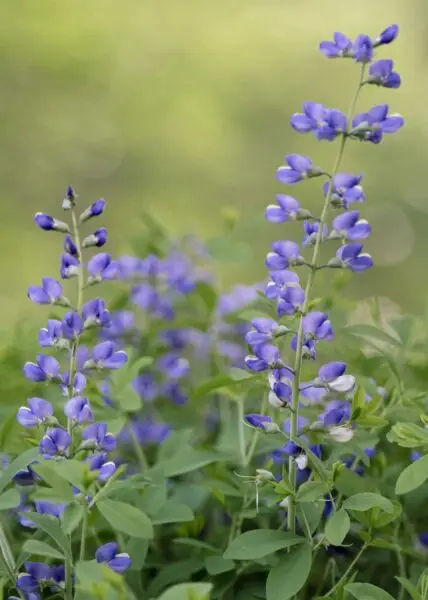
False Blue Indigo is tall
False Blue Indigo can get tall—sometimes up to five feet. Remember how big it can get when you plant, and provide adequate space for its growth. You may have to add a few stakes to help it not flop over if it gets too tall.
False Blue Indigo needs air
Another challenge lies in maintaining good airflow around the foliage to prevent powdery mildew, a common issue with False Blue Indigo. To minimize this, ensure proper spacing between plants and choose a location with good air circulation. Additionally, avoid overhead watering, as damp leaves can lead to fungal diseases.
And now to share some good news…
False Blue Indigo is deer-proof
Deer do NOT eat False Blue Indigo. If you’re worried about deer nibbling your garden, planting False Blue Indigo is good native gardening choice.
Where can you find or buy False Blue Indigo?
Sadly, finding specific native plants can be difficult, especially at conventional plant nurseries. To help make this challenge less cumbersome, we’ve put together four sources for finding native plants like False Blue Indigo.
Where can I find seeds and plants?
Finding native plants can be challenging (we partly blame Marie Antoinette.) To make it easier, we’ve assembled four sourcing ideas.
Native Nursery List
300+ native nurseries makes finding one a breeze
Online Native Plant Sellers
We've included 100+ online resources to help
Society Plant Sales
Every state has a native plant society; find yours
Online Communities
Local Facebook groups are a great plant source
What are good pairings for False Blue Indigo?
False Blue Indigo leaves have a lovely silvery blue-green color. Even without flowers, they look gorgeous. Plant them with other tall native flowers that flower later in the season into fall, like coneflowers, Milkweed, Rattlesnake Master, Joe Pye Weed, native asters, Ironweed, Culver’s Root, and Golden Alexander.
If you’re looking for other gardening ideas for False Blue Indigo, be sure to read our Single-Plant Gardens, Three-Color Landscaping Guide, or Guide to Butterfly Host Plants. Each offers simplified ways to pick native plants for your garden. (And if you’re worried about making a gardening mistake—read this!)
Congratulations, you are now ready to get planting some False Blue Indigo! With its eye-catching flowers, low-maintenance nature, and soil-improving capabilities, this native perennial is a wonderful choice. Although it may take time to establish and requires a little extra space (these plants get big!) the rewards are well worth it. From its spring emergence to its summer bloom and beyond, False Blue Indigo looks stellar throughout the seasons. It’s perfect for Northeast, Mid-Atlantic, Midwest, and Southern gardens. Happy planting!
Sources
- Nelson, Gil. Best Native Plants for Southern Gardens: A Handbook for Gardeners, Homeowners, and Professionals, (2010).
- Harstad, Carolyn. Go Native! Gardening with Native Plants and Wildflowers in the Lower Midwest. (1999), 209-210.
- Exploring Birds, “Birds attracted to Wild Blue Indigo“
- USDA Plant Guide: Blue Wild Indigo, (PDF).
